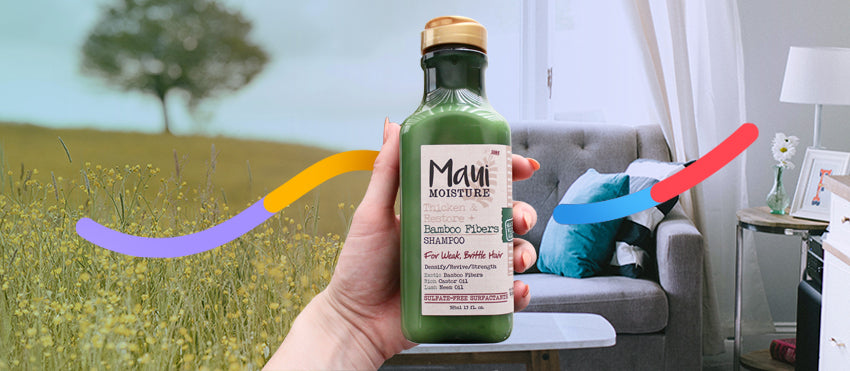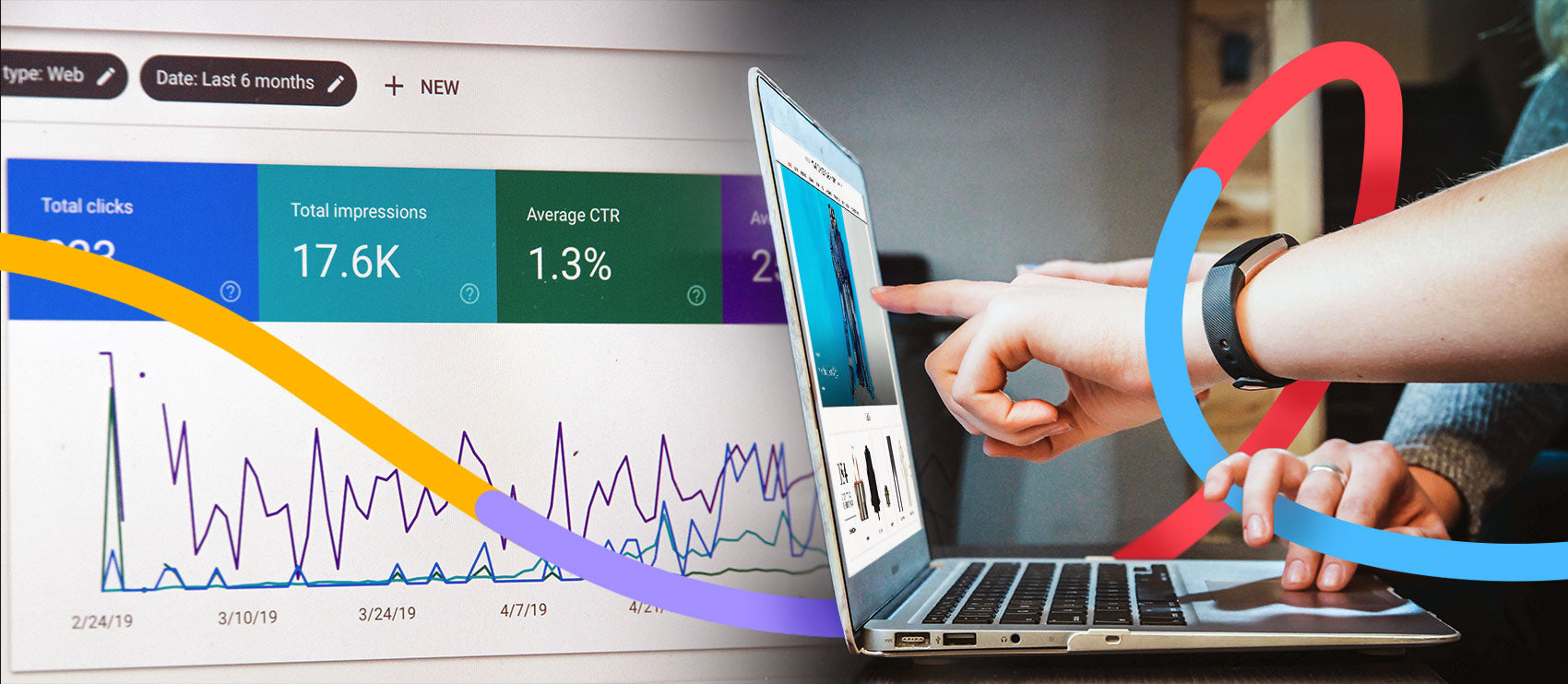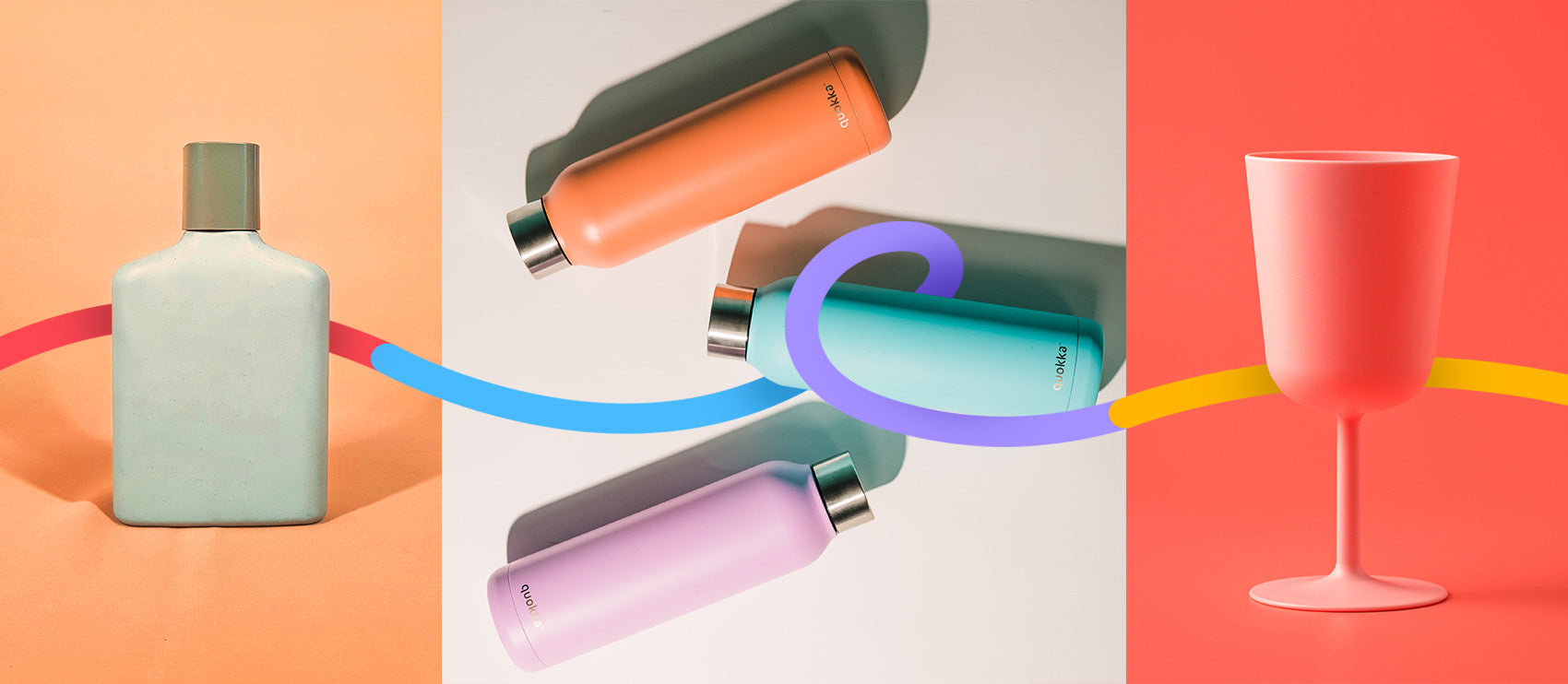Consumer behavior has changed as a result of the COVID-19 pandemic. The sharp rise in online shopping has created an opportunity for brands to use product photography that relates to your customers and your bottom line. So as you shoot and edit product photos in a COVID world, there are some intentional changes to make so customers will want to buy your products now.
Highlight home life
Many consider 2020 the year at home. By the end of March, more than 100 countries had implemented either a partial or full lockdown, bounding people everywhere to their homes except for essentials. As the majority of the world sheltered in place and businesses began to work remotely, the home became the center of quarantine life. In fact, most Americans reported spending less than 8% of their time outside.
Reflecting these lifestyle changes in your product photography is one way to relate to your customers.
Take Jabra, for example. Their audio and video conferencing devices are usually found in offices and conference rooms. However, on their website, they have a dedicated page highlighting their products in a working from home environment.
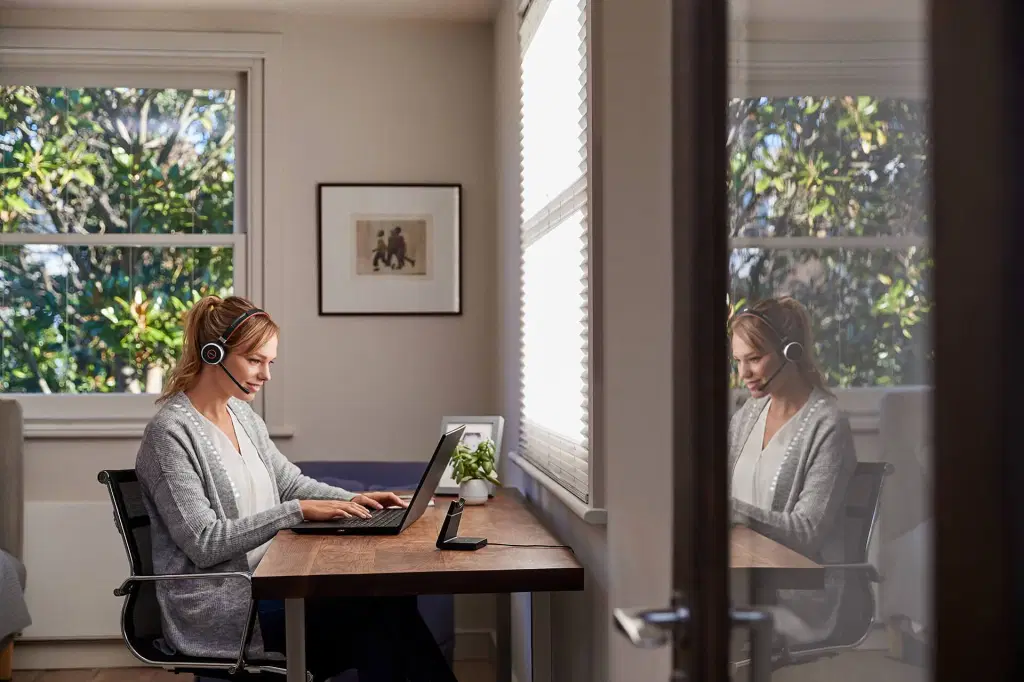
Businesses will need to consider this shift well after life has returned to normal. Studies reveal that 30% of executives are expecting to reduce office space because of remote working. To reflect these changes, you might tweak your own product imagery:
- Shoot in a house or home office to relate to the environments your customers frequently spend time.
- Create a set to resemble an area of the home in a photography studio if you don’t have a real home space to use.
- Repurpose other images by removing the background and adding them to new home-based scenes.
Showcase outdoor settings and activities
Fewer indoor options and the safety of outdoor settings have made people spend more time outside than before. In the U.S., for example, many National Parks welcomed visitors in record numbers. With more people spending time outside, it’s a good idea to showcase how your products work in an outdoor setting through your photos.
Although blankets are typically for indoors, Big Blanket Co. displays user-generated content (UGC) on their website that features their product being used outside.

Create an outdoor setting for your own product photos:
- Source UGC like Big Blanket Co. To find UGC, turn to social media to see what people are saying and posting about your brand. If there’s not much, devise some strategies to encourage more sharing. Promote a branded hashtag, host a contest or giveaway, and feature your UGC on your social media and website — heavy emphasis on the outdoors.
- Replace the background of existing images. You can add different backgrounds for different times of year and outdoor settings. Repurposing is cost-effective and straightforward, and offers a fun way to get creative and show your customers different ways to use your products.
- Hold your photo shoot outside. Consider scheduling any new shoots when the weather is favorable. An outdoor shoot also maximizes safety for everyone involved.
- Use props to create outdoor settings. If you don’t have access to an appropriate outdoor area, using items like fake grass, flowers, or leaves, etc., can produce realistic results.
Simply changing your photo’s setting can allow your customers to see your products in a whole new way.
Focus on product features
As the year has progressed, the important characteristics of products have changed for customers. For some products, the pandemic has created a surge in their demand. For example, Henkel noted that their hand soaps sales in the U.S. had risen 116% from the beginning of the year through October 2020. People are now looking for items that prioritize safety, convenience, and wellness to help them through this uncertain time.
If you have a product that is not an “in-demand” item during the pandemic, look for different ways to appeal to the customer.
Take the STUPID Car Tray pictured below, for example. While the hooks are typically for hanging items like a garbage bag, they’ve added a COVID-inspired feature as well: you can use the hooks to hang your masks. Pre-COVID this wouldn’t have been a relevant feature to highlight, but in our pandemic reality, it’s a great benefit.

The pandemic has also brought awareness to other global issues such as sustainability. After noticing less air pollution, cleaner waterways, and a rise in plastic waste during the shutdown, studies revealed that more than a third of Americans polled would pay slightly more for sustainable products.
For example, washable bento-style lunch boxes are now touted as the safest, easiest to clean option for school-aged children.

When photographing products, calling attention to specific features essential in a COVID economy is a great way to relate to your customer’s current mindset.
Make your photos uplifting
The emotional toll caused by COVID-19 has had a significant impact on mental health. In a recent CDC survey, over 40% of respondents said they had at least one mental or behavioral health issue connected to the pandemic. To boost customer spirits and your bottom line, you can carefully style product photography and advertising using a variety of methods.
Using models who smile in photos is more popular than images with a serious expression. One five-week test found that smiling models can boost sales by almost 10%. Additionally, studies have shown that smiling indicates trustworthiness.
RadSwan uses smiling models all over their site to help sell their clip-in hair extensions. The images portray happiness, which shoppers may associate with how the hair products will make them feel in their own lives.


Color psychology is another fascinating way to enhance emotional reactions to images. The science behind the impact color has on the consumer can vary between age groups and genders, however, the influence can change your customers’ mindset and your conversion rates.

CBD skincare brand Happy Dance uses product photos with vibrant colors, evoking compassion, happiness, and other uplifting feelings. These emotions support the brand’s philosophy for busy women and mothers to take care of themselves through self-care and pampering.

During such unhappy times, it’s nice for brands to appeal to consumers by inspiring positive emotions through uplifting product imagery.
Add face masks to your models
Mask mandates are prevalent worldwide, and your brand can’t afford to be out of touch. Even with the vaccine rollout, the pandemic isn’t going away overnight. By adding a mask to your model either during the shoot or in post production, your content will remain relevant and socially conscious.
Haerfest used masked individuals on their Instagram feed to promote their accessories products. They’ve also encouraged their remote working customers to find an outdoor workspace at their local park through the caption.
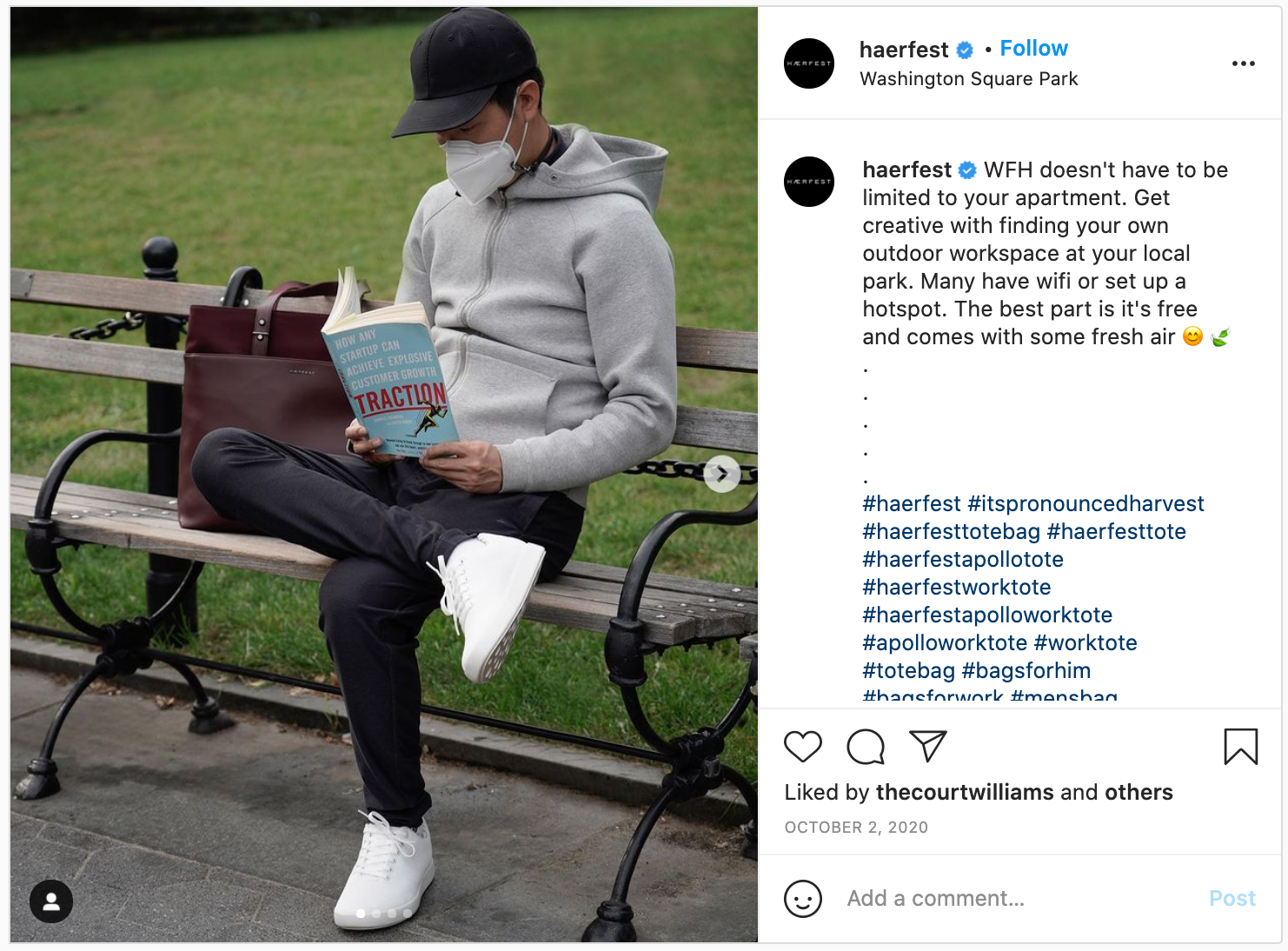
Whether you’re styling or editing your photos, be sure the masks look as natural as possible and don’t distract from the product. Use solid subdued colors instead of distracting patterns, and keep the focus on a different part of the image — like your product, for example.
Create space between people
Social distancing is a crucial element in eliminating possible exposure to the virus. Therefore, any photos with a larger group of people without a responsible amount of space between them is very off-putting to customers.
Australian-based luggage company July places their models at a safe distance in the scenic outdoors to create a group shot. Throughout their website, the close up product images have a stark white background, however, any pictures with models are shot in outdoor settings.

You don’t need to reshoot all your images to do the same. You can repurpose group photos by using Photoshop to remove some people and make more space.
And remember: If you have to have a photoshoot, make sure you institute safety protocols. These protocols may include spacing models, more sanitation, and hosting the photoshoot outdoors or in a ventilated space.
Relate to your customer through your images
The pandemic has created a shared experience for all of us. Using your product photography to connect to your customer’s mindset allows you to gain their trust while validating the overwhelming emotions we have all felt during these difficult times.

